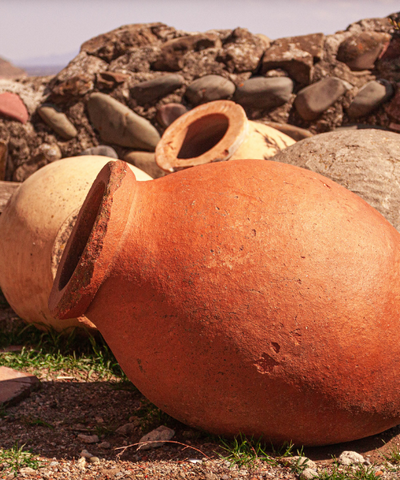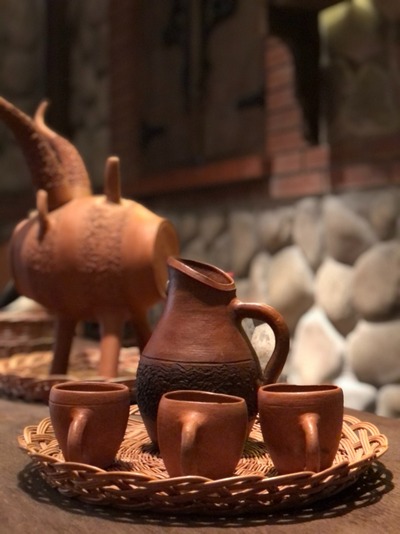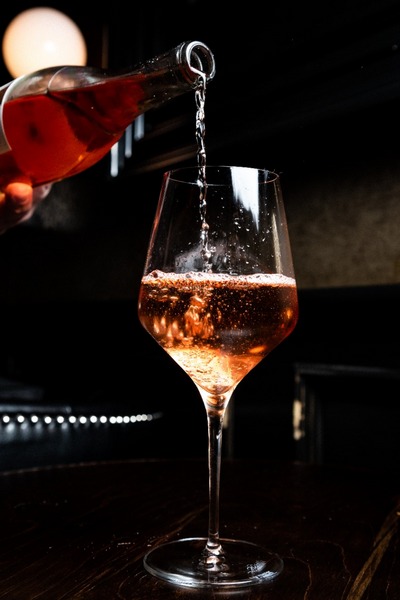homeland of ghvino
Georgia
The captivating history of Georgian winemaking, a land renowned as the birthplace of wine. Unearthed artifacts dating back over 8,000 years reveal the oldest traces of winemaking in the world. From the enchanting regions of Kakheti, Kartli, Imereti, Racha-Lechkhumi, Svaneti, to Abkhazia, the cultural heritage of winemaking has thrived for centuries. Discover the legacy of Neolithic winemaking in Anaklia, where vessels unveiled a timeless approach that resonates even in modern times. Let Georgia's rich wine traditions transport you to a realm of timeless allure.
Unique grapes
Hidden treasures of Georgia's wine world, proudly over 500 distinctive grape varieties, many of which remain undiscovered by Western palates. Immerse yourself in the allure of the region's most renowned wine grapes, unique characteristics and flavors.

Qvevri
Witness the ancient winemaking tradition of Georgia, the secret of timeless beauty, a method that has stood the test of time preserved within buried amphoras. These historical vessels, predating oak barrels and steel tanks, have safeguarded the unique winemaking technique. Georgians mastered the art of wine production in clay vessels known as Qvevri.
These vessels are buried in the cellar, acting like natural refrigerators with a consistent temperature throughout the year. Modern amphorae, ranging from 800 to 3500 liters in volume, serve different purposes. Smaller clay mugs are used for fermentation, while larger ones are for maceration and storage.
In the production of Kakhetian amber wine, the pips are left to ferment with the marc and stalks for six months. This unique method contributes to its distinctive flavor profile. Interestingly, winemaking practices vary in different regions of Georgia such as Kartli, Imereti, Racha-Lechkhumi, Guria, and Samegrelo. However, the ancient Georgian method of winemaking in qvevri has gained international recognition and is listed as UNESCO World Cultural Heritage.

Traditional tools used in Georgian winemaking
Satsnakheli: A large wooden press used to extract juice from grapes. It involves crushing the grapes by foot and pressing the juice through a sackcloth.
Orshimo: Orshimo is tableware, which helps you to take out wine from Qvevri.
Matsatsuri: Wooden pole with an absorbent cloth attached, used to soak up residual water from the bottom of a qvevri after it has been thoroughly cleaned and emptied.
Takvisara: Brush-like tool crafted from stiff twigs of the butcher's-broom plant, an evergreen native to Georgia. It is available in both handheld and pole-attached versions. When workers climb inside qvevri, they utilize the handheld tagvisara to assist in the cleaning process.
These traditional tools and techniques are still employed by many Georgian winemakers today, contributing to the unique character and quality of Georgian wines.

Traditional food
Georgian traditional cuisine offers a wide range of flavors and dishes that pair exceptionally well with Georgian wines. Some popular pairings include:
Khachapuri: Georgian cheese bread, often filled with varieties like Sulguni or Imeretian cheese. It pairs well with white wines like Rkatsiteli or Tsolikouri.
Khinkali: Traditional Georgian dumplings filled with meat, cheese, or vegetables. They pair well with medium-bodied red wines such as Saperavi or Tavkveri.
Mtsvadi: Traditional Georgian grilled meat skewers. They pair nicely with full-bodied red wines like Khvanchkara or Mukuzani.

Wine legends and folklore
Georgian wine is steeped in legends and folklore, reflecting the cultural significance of wine in Georgian society.
The Legend of Queen Tamar: According to Georgian legend, Queen Tamar was known for her love of wine and introduced strict regulations to ensure its quality. She is believed to have said, 'Wine is the king of drinks; it has the power to conquer the heart.'
The Spirit of the Vineyard: Georgian folklore often depicts vineyards as enchanted places inhabited by spirits. These spirits are said to protect the vines and ensure a bountiful harvest.


